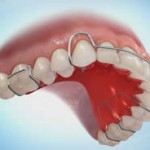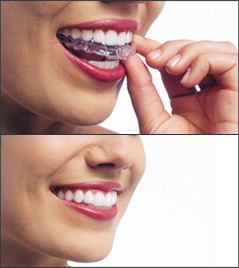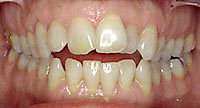Oral habits in children are a major concern for the dentists and parents. A baby’s mouth acts as a primary device for exploring the environment and his or her lips and tongues are stimulated by instinctive sucking. By random movements, babies discover their hands and toes and use these to continue the stimulation of their mouth and related structures. Normal habits grow out of these in the early developmental stages. However, some babies do not. They continued to retain these habits until they are toddlers and it created further dental problems.
Category Archives: Orthodontic
How to Make Your Braces Hurt Less
Dental braces are a type of orthodontic treatment used to correct teeth that are crowded, crooked, protruding, out of alignment or have irregular spacing. By moving the teeth into the ideal position, dental braces help to create a more attractive and healthier smile for both children and adults. Continue reading
How to Care for a Dental Retainer
 Why do we need to wear retainers?
Why do we need to wear retainers?
Orthodontic retainers are worn after orthodontic treatment to provide retention and to ensure that our teeth are stabilized in their desired position. It is a very important phase of orthodontic treatment as teeth can relapse to its original position if there is no retention. Continue reading
How to Care for Braces
 Â Orthodontic patients have higher risk to develop caries as plaque can accumulate rapidly around components of braces. Therefore, it is important to maintain good oral hygiene while getting your teeth straightened. Continue reading
 Orthodontic patients have higher risk to develop caries as plaque can accumulate rapidly around components of braces. Therefore, it is important to maintain good oral hygiene while getting your teeth straightened. Continue reading
Thumb Sucking and Development of Teeth
Suckling vs. sucking
Suckling
Suckling is a normal physiological reflex in infants, which consists of small nibbling movements of the lips. The movements stimulate the smooth muscles surrounding the milk ducts of the lactating mother to contract and squirt milk into the infant’s mouth. When the milk is squirted into the mouth, it is only necessary for the infant to groove the tongue to allow the milk to flow back into the throat. The tongue, however, must be placed front to contact with the lower lip, so that the milk is in fact deposited on the tongue. The tongue-to-lip apposition is so common that it is usually adopted at rest, and it is frequently possible to gently move the infant’s lower lip and notice that the tongue tip moves with it, almost as if they were glued together. The suckling reflex normally disappears during the first year of life.
 Sucking
Sucking
Nearly all modern infants engage in some sort of habitual non-nutritive sucking– thumb- or finger-sucking or sucking of a similarly shaped object. A vast majority do so during the period from 6 months to 2 years or later. Continue reading
Pros and Cons of Invisalign Braces
 Invisalign – The Ultimate Choice
Invisalign – The Ultimate Choice
Seeking a beautiful smile but metal braces seems to be the stopper? Now there is a solution for your problem with the advancement in the field of orthodontics – the invisalign braces. No more ugly metallic braces and wires for people to see, no more pain torture episodes, no more funny speech problems. It is a dream come true for adults to straighten their teeth especially for those working in professional fields. Continue reading
How to Fix an Open Bite?
Ever notice a gap in between your upper and lower teeth when you bite or while looking in the mirror? You could be having an open bite.
What is open bite?
Open bite is a malocclusion, a misalignment or incorrect manner in which two opposing teeth meet. This malocclusion is handled by an orthodontist, a specialist who deals with the growth and development of the face and how the teeth bite together, and with the diagnosis, interception and treatment of any abnormal occlusion. Continue reading
Invisalign-Problems arising from treatment
 Invisalign is a series of clear,transparent, removable devices that are used to align teeth to the desirable position. It is used as an alternative to metal dental braces due to its cosmetic value. This cutting edge dental treatment is available in the U.S and a few other countries worldwide. A full set of treatment usually includes 20 to 30 aligners per arch, though the number varies for each individual. Each aligner is designed with exact calculations according to your teeth position to gradually shift your teeth into place. The invisalign system is custom made and each retainer is switched every two weeks. Continue reading
Invisalign is a series of clear,transparent, removable devices that are used to align teeth to the desirable position. It is used as an alternative to metal dental braces due to its cosmetic value. This cutting edge dental treatment is available in the U.S and a few other countries worldwide. A full set of treatment usually includes 20 to 30 aligners per arch, though the number varies for each individual. Each aligner is designed with exact calculations according to your teeth position to gradually shift your teeth into place. The invisalign system is custom made and each retainer is switched every two weeks. Continue reading

